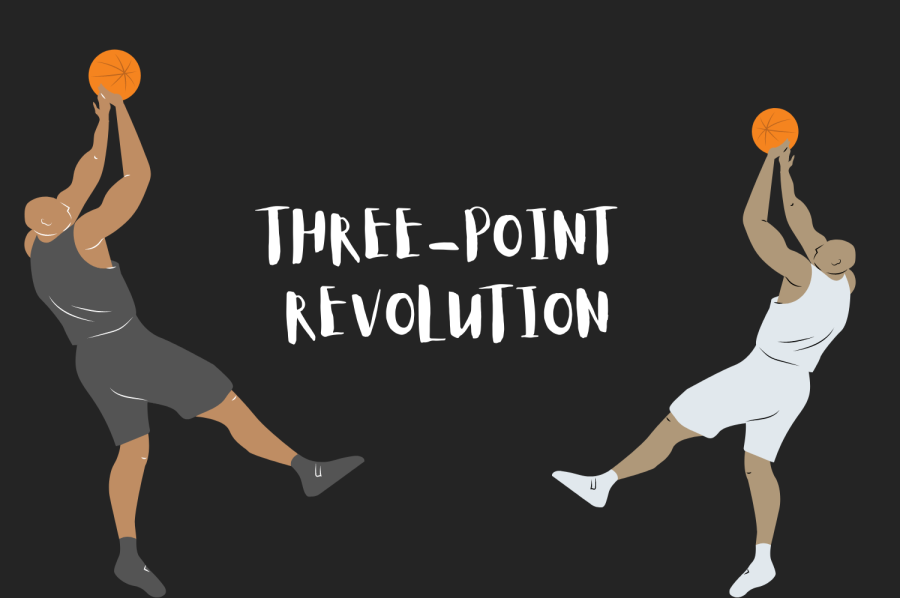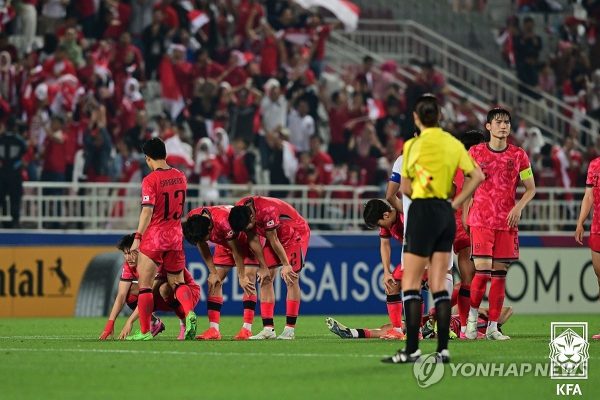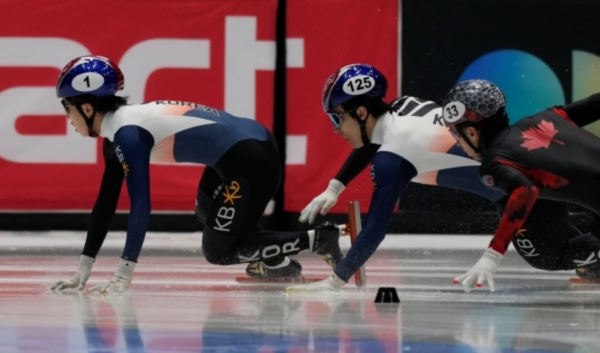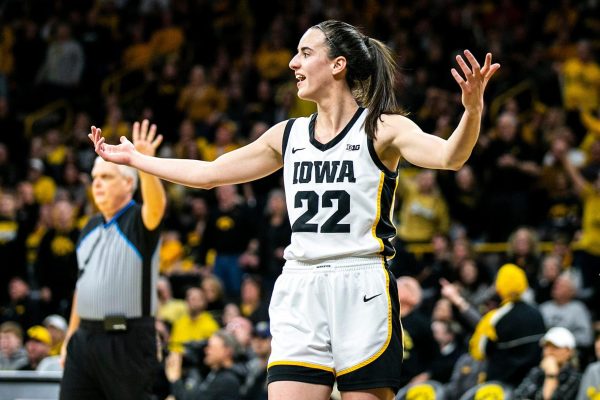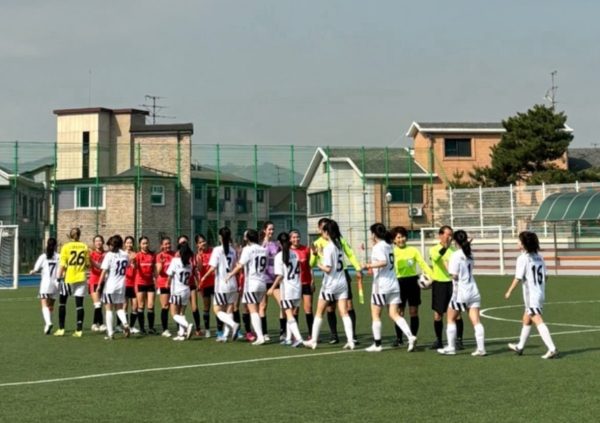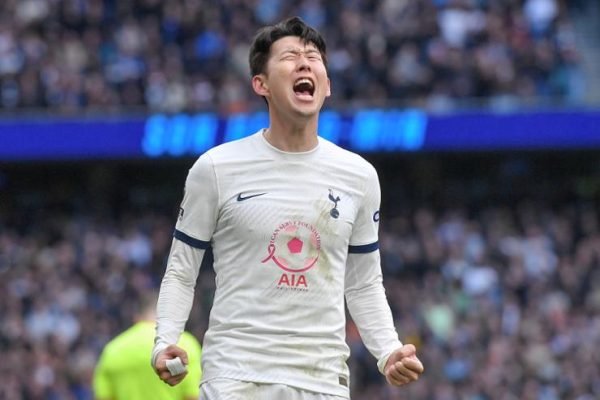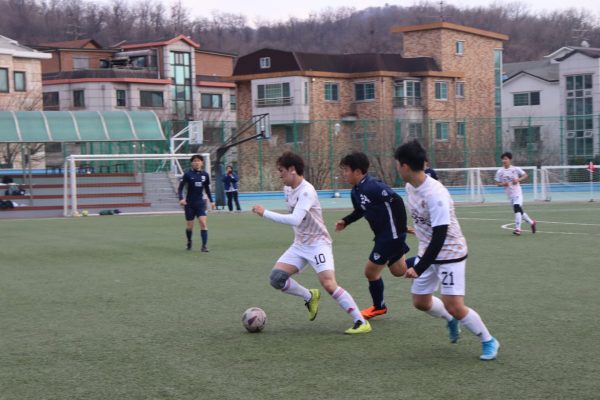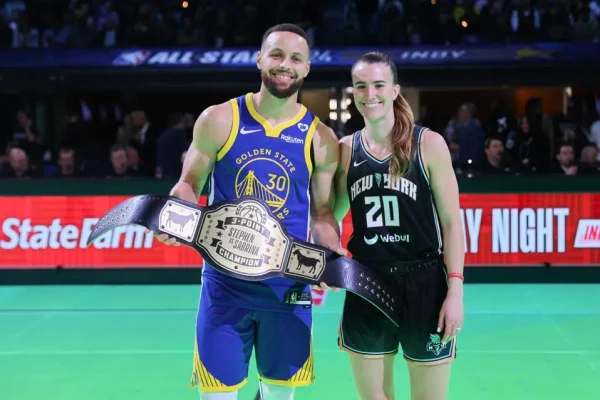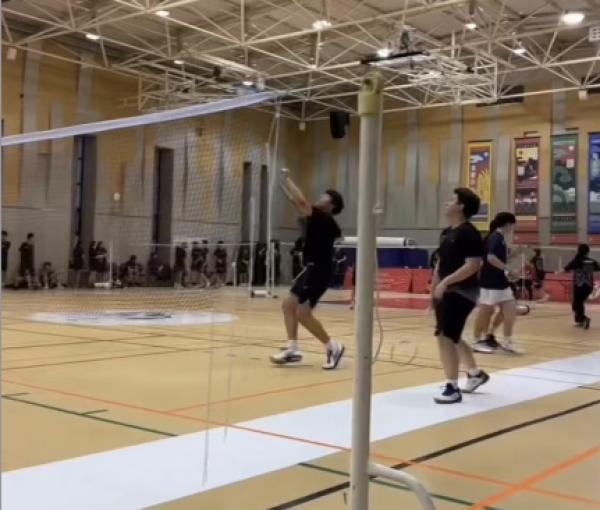A deep dive: how the three-point revolution is changing high school basketball
Feb 18, 2022
26,375.
That is how many three-pointers NBA players made in the 2020-21 regular season. Forty years ago, in the 1979-80 season, that figure stood at just 64.
In recent years, the three-point line has ascended to widespread popularity and its impact in the NBA is on full display. Players such as Stephen Curry, NBA All-Star and point guard for the Golden State Warriors, have shown impressive shooting proficiency from the three-point line. Curry’s wizardry and potent offensive strategies have earned him two three-point records in just the past two months and have cemented his legacy as one of the greatest shooters in the NBA. Other elite players have also made the three-point shot their stock-in-trade, further fueling the three-point craze.
The rising popularity of the three-pointer is not just happening in the NBA. High school basketball is also experiencing its own three-point revolution with more varsity and JV players taking shots from further away. Multiple interviews with coaches and players in addition to extensive game-data analyses were conducted to investigate how the rising popularity of the three-pointer has affected high school basketball.
When looking purely at the numbers, high school basketball has seen a three-point trend parallel to that of the NBA. In one high school basketball game between SIS and YISS on Nov. 24, 2021, SIS boys varsity players made nine three-pointers, which accounted for approximately 34 percent of the total 79 points that were scored. Data analysis on the 2020-21 NBA season also found that approximately 34 percent of the total points that were scored league-wide came from three-point shots.
That is not to say that the three-pointer has become as popular in high school basketball as it has in the NBA. The aforementioned statistic on varsity basketball included data from only one game, which is not nearly enough to corroborate the conclusion that varsity players are shooting as many threes as athletes in the NBA in proportion to the total number of points scored per game. The finding does, however, suggest that varsity players are earning many of their points from the three-point and that it might have something to do with the three-pointer craze in the NBA.
“The most obvious reason why the 3-pointer has become popular [in high school games] is that more and more people are watching the NBA,” Andrew Hahm (11), varsity boys basketball three-point shooter, said. “Players like Trae Young and Stephen Curry are setting precedence for high schoolers. It is not only due to the fact that three-pointers are worth more points, but it also looks cooler when figures like Curry [do it].”
With more varsity players attempting to emulate NBA athletes who have found enormous success from shooting further away from the basket, the three-point shot has become a more common offensive play in high school games. Varsity players have also used the three-point line as a strategic tool to create more scoring opportunities.
“I have recently been shooting more threes than before as I have found that doing so not only allows me to earn more points but also become more of a threat to the defense,” Andrew Park (10), varsity basketball player, said. “If I am a constant threat outside the paint, the defense now has to guard me from the three-point line, creating more space near the basket.”
Players have found that shooting from the three-point line is not just about getting the most points out of a single play—it is more about spreading out players out on the court.
“When you are capable of shooting the three, the defense spreads out even more because they have to defend you,” Tim Munro, varsity boys basketball coach, said. “Now, the interior becomes more open, and it is going to get easier to make layups that are not contested.”
Furthermore, there is a pure statistical advantage to shooting threes rather than simply relying on easy layups and mid-range shots. Daryl Morey, an NBA game analyst and the president of basketball operations of the Philadelphia 76ers, has found that while coaching for teams in the G-league, a three-point shot is oftentimes an effective offensive play despite its risks.
“With regards to the evolution of the NBA, they had analysts who were saying that if you shoot 10 times and make 40 percent of your threes, you would get 12 points,” Coach Munro said. “But if you shoot 10 times and make 50 percent of your twos, you would only get 10 points. And so that was now the thing—let us improve our three-point shooting to get more points.”
There is, however, a limitation to the validity of Morey and Munro’s statements. Morey’s argument holds true only under the condition that players already have the adequate skill-set necessary to be successful in shooting beyond the three-point arc. Coaches have agreed that the three-pointer is not a shot always worth taking if players are unable to consistently score.
“With people that can and have the ability to shoot [the three-pointer], it just makes sense,” Morgan Miller, varsity girls basketball coach, said. “But it does not mean that it is a perfect shot—lots of people are taking it before they are strong enough to do so.”
Most high school basketball players are not as proficient at shooting from the three-point line as NBA players, who on average make 35 percent of their threes while facing some of the best defenders in the world. For this reason, varsity athletes have not entirely been dependent on the three-point line as many NBA players have.
“At the high school level, you need more balance in terms of the number of three-point attempts,” Coach Munro said. “High schoolers want to emulate NBA players, but they are not making 40 percent of their three-pointers; they are shooting a much lower percentage.”
While the three-point line in the NBA has evolved to become a widely used tool to earn more points, the same cannot be said for high school basketball. The three-point line in high school varsity basketball largely serves to spread out players and create more space on the court.
Certainly, the chance to earn three points instead of two remains one of the main reasons why many high schoolers take the gamble and shoot from more than 20 feet away. Yet, in varsity games, basketball is nowhere close to being a competition between three-point shooters as it is in the NBA. High school centers and power forwards rarely attempt three-point shots and instead use the open space within the paint to score easy points. The three-point revolution in high school basketball has yet to rival that of the NBA.
Nevertheless, the three-point shot is expected to continue changing the game of basketball as high school players become more proficient long-range shooters. Indeed, the increase in shooting abilities was the exact factor that drove the three-point craze in the early 2000s in the NBA. As the skill-set among high school varsity players is expected to increase, so too will the number of three-point attempts. For now, audiences will have to wait and see how the three-point revolution will affect the game of basketball in the future.

